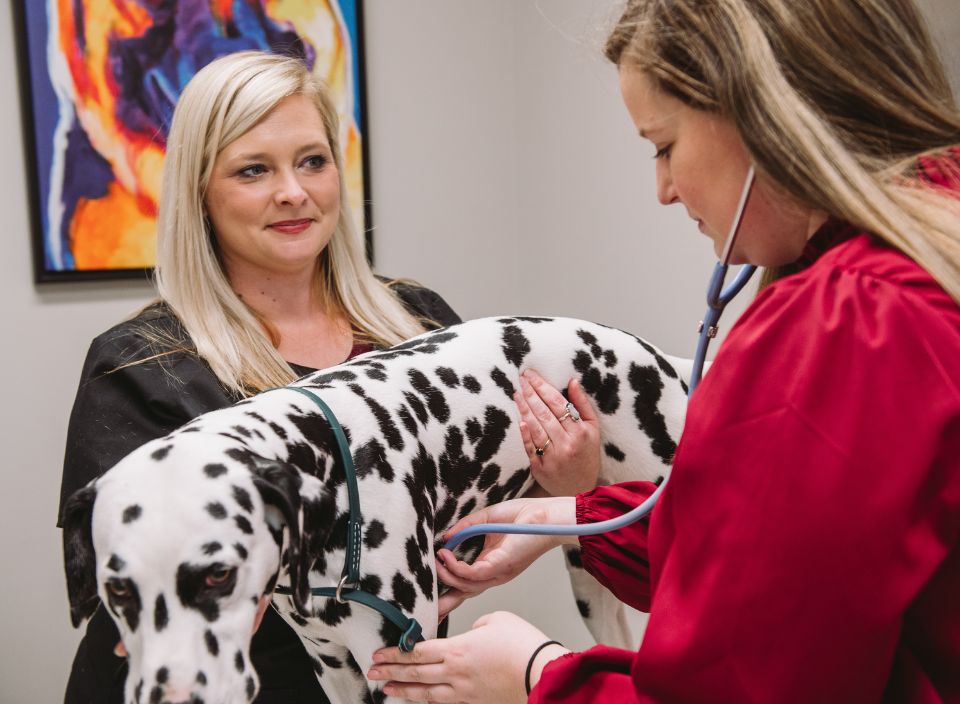Grace Animal Hospital
PetSurgery
Your pet is in safe hands with us! Read below to learn more about our pet surgery services:
Pet Surgery

Surgical Procedures
With the exception of emergencies, we perform surgeries by appointment. We have a dedicated surgical suite where we perform sterile surgical procedures. Our doctors and staff take all safety precautions for the health and safety of your pet.
We perform pre-anesthetic blood work on each of our surgical patients before procedures to ensure we provide the smoothest and safest protocol for each individual patient. Our veterinarians personally conduct a pre-anesthetic physical exam to finalize surgical plans.
All of our patients are placed on water-circulating heating pads, and a member of our surgical team monitors their vital signs continuously during each procedure with multi-parameter monitors. Grace Animal Hospital is one of only a few hospitals in South Carolina that performs anesthesia with a ventilator allowing us to breathe for your pet. At discharge, a member of our staff will go over all post-operative care instructions and answer any questions you have.

Orthopedic Procedures
We are proud to offer advanced orthopedic surgical procedures within our general veterinary practice for injuries, degenerative joint conditions, early-age hip intervention, as well as other issues that may be present in your animal’s musculoskeletal system. The most common cause of hind limb lameness in dogs is a torn cranial cruciate ligament (the dog’s equivalent of the human ACL), and we are proud to be able to provide the best surgical intervention for this condition, called a TPLO (short for tibial plateau leveling osteotomy). There are other surgical interventions for a small percentage of dogs with this condition that can be discussed at a consultation at Grace Animal Hospital.
We utilize state-of-the-art diagnostic imaging to enhance our capabilities for orthopedic surgery, ensuring that your pet has access to the highest standard of veterinary medicine. Our surgical team is highly trained and experienced in orthopedic procedures, so you can rest assured that your pet is in good hands. We promise to communicate with you throughout the process and make your pet’s surgery as stress-free as possible.
Routine Orthopedic Surgeries
Tibial plateau leveling osteotomy (TPLO): A procedure used to stabilize Cranial Cruciate Ligament (CrCL) ruptures. The CrCL is similar to the ACL in a human knee.
Fabellotibial extracapsular stabilization: Solves instability issues in a pet’s knee joint by creating a suture that acts similarly to a CrCL ligament. Is a method of cranial cruciate ligament surgical stabilization for select cases, mostly less active, small breed dogs.
Patella luxation: This procedure treats a luxating patella, which is when knee joints become dislocated. Pets with a luxating patella have a kneecap that “pops” out of its usual location.
Juvenile pubic symphysiodesis:An early and relatively non-invasive surgical intervention for canine hip dysplasia. In hip dysplasia, the “ball and socket” hip joint is loose, and the socket does not adequately cover the ball. This procedure alters the way the pelvis grows (is performed in dogs less than 16 weeks of age) so that there is increased acetabular coverage of the femoral head.
Femoral head and neck excision: A procedure that involves removing the ball of the hip ball-and-socket joint and allowing tissue to grow to replace the joint. Used to treat a variety of hip conditions; traumatic hip dislocations, femoral head and neck fractures, some pelvic fractures, end stage hip osteoarthritis, avascular necrosis of the femoral head.
Case-by-Case Basis
Fracture repair: Repairs fractures (breaks) in bones. Usually involves the use of hardware such as pins and rods.
Angular limb deformity: A corrective procedure that involves cutting the bones at the point of maximum angulation or rotation, realigning them to their normal position, and stabilizing them with an external fixator or internal hardware such as plates and screws. Once the bone has healed, the fixator can be removed.
Bone biopsy and culture: Obtaining samples of bone to determine if there is an underlying infectious or possibly cancerous process associated with bone disease
Arthrocentesis for synovial fluid analysis: Obtaining samples of joint fluid to look for rare conditions such as autoimmune joint diseases, infectious joint diseases, and others.
Epidural management of lumbosacral stenosis: Staged steroid injections into the epidural space of the lower back in dogs with a condition known as lumbosacral stenosis to help alleviate pain and discomfort.
